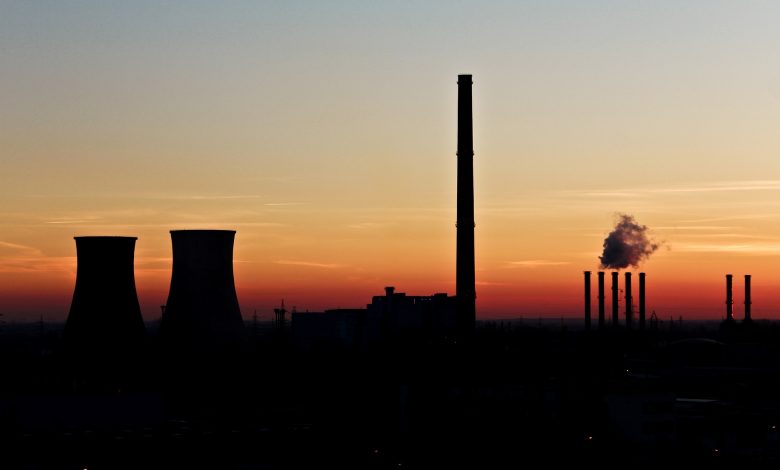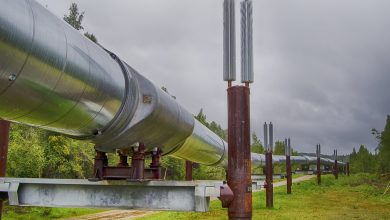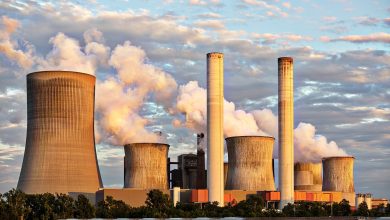Reasons Why Natural Gas is the Best Energy Source Heading Into 2020

Natural gas, a mixture of hydrocarbon gases, is a non-renewable fuel that has gained tremendous attention in recent years. On course to become the world’s second-largest energy source after oil by 2030, natural gas has emerged as a palatable fossil fuel in a world entering an era of terrible climate impacts. This article explores what natural gas is, what makes it an environment-friendly energy source compared to other fossil fuels, and why it is likely to come out on top in a battle against coal.
An Overview of Natural Gas
Natural gas reserves are located deep in the earth, in proximity to other solid and liquid hydrocarbon beds such as crude oil and coal. The gas is formed as a result of decomposing organic matter, typically from marine microorganisms that have been deposited over millions of years. The organic matter mixed with mud, sand, and silt on the seafloor, got buried over time and underwent a thermal breakdown in an absence of oxygen and exposure to increasing amounts of heat and pressure, getting converted into hydrocarbons.
Natural gas is the name given to the lightest of these hydrocarbons existing in the gaseous state. In its pure form, natural gas is a colorless, odorless gas comprising mainly of methane.
After natural gas is formed, what happens to it depends on the porosity and permeability of the surrounding rock. Porosity plays an important role in geology, controlling the storage, flow and transportation of fluid in geothermal systems. Highly permeable rocks allow gas and liquids to flow easily through them, while those with low permeability will disallow the passage of fluids.
Upon its formation, natural gas moves through the pore spaces of the rock to rise to the surface. A majority of the natural gas deposits existing today came about when gas passed through porous and permeable rock under a layer of impervious rock. In other words, the gas became trapped before it could emerge to the surface and escape into the atmosphere.
Conventional natural gas deposits are found along with oil reservoirs, wherein the gas is mixed with the oil or floating on top. Unconventional deposits of natural gas include shale gas, coalbed methane, and tight gas sandstone. Unconventional gas development is difficult, and its production is costly.
Shales are fine-grained sedimentary rock rich in petroleum and natural gas. The U.S. Energy Information Administration (EIA) estimates that the country’s shale gas production for 2018 accounted for 69% of the total U.S. dry natural gas production for the same year.
Coalbed methane is formed as organic material, converted into coal and then stored on many surfaces on the coal, with water pressure holding the methane in place. The gas is extracted by pumping out the water, which lowers the pressure and allows the gas to detach from the coal surface and flow out of the well.
Tight gas is trapped in extremely impermeable hard rock or in atypically impermeable or nonporous sandstone and limestone formation. Tight gas formations are much older than conventional gas formations, having been found in Palaeozoic formations.

Uses of Natural Gas
Natural gas powers many homes, offices, power plants, and manufacturing facilities. Natural gas power plants generate electricity in single-cycle or combined-cycle plants. A single-cycle gas turbine converts the heat energy from combustion into electricity at efficiencies of 35%-40%, while a combined-cycle plant can achieve efficiencies of 40% or higher.
Natural gas-fired plants can be constructed more cost-effectively than coal-fired power plants, and benefit from greater operational flexibility, as they can be fired up and turned down quickly. With the fall in natural gas prices in the United States since 2008, it has emerged as a popular base and intermediate load power source.
More than a third of U.S. natural gas consumption occurs in homes and commercial buildings for purposes of heating spaces and water, as well as for cooking. Nearly 48% of homes use natural gas, its use dominating in every region except the South, while 14% use fuel oil, kerosene, or another fuel.
Natural gas can produce heat and electricity simultaneously via a technology known as cogeneration. A cogeneration system has the ability to put 75%-80% of the energy in gas to use. Higher efficiencies can be reached by trigeneration systems that provide heating, electricity, and cooling.
As a heat and power source, natural gas is used in the production of plastics and chemicals. The interaction of steam with methane (“steam reforming”) generates the hydrogen gas used to produce ammonia for fertilizers. Ammonia is an industrially important inorganic chemical, used in making fibers, explosives, plastics, and intermediates for dyes and pharmaceuticals. Carbon dioxide is one of the industrial byproducts of ammonia production. The high oil prices of 2018 led to a shutdown of European ammonia factories in the summer months, giving rise to a CO2 shortage, and affecting the production of carbonated drinks.
The hydrogen from natural gas can serve as a fuel. A fuel cell is the most efficient way of converting hydrogen into electricity, wherein hydrogen and oxygen are combined to produce electricity, water and heat. Even though the process of reforming produces CO2 emissions, the amount released for each unit of electricity generated is far lower compared to a combustion turbine.
Compressed natural gas is an alternative to gasoline, diesel and liquified petroleum gas (LPG), used commonly in public transportation. Natural gas powers over 175,000 vehicles in the United States and approximately 23 million vehicles worldwide.
CNG vehicles emit a lot less carbon monoxide, nitrogen oxides and particulates than vehicles running on gasoline. However, as one gallon of CNG has just a quarter of the energy in a gallon of gasoline, CNG vehicles need large and bulky fuel tanks, making CNG a practical choice for buses and trucks. For this reason, it has been suggested that natural gas can be better utilized to generate electricity to power plug-in cars or hydrogen for fuel cell vehicles.
The growing supply of natural gas and predictions of lower cost have led fleet operators to evaluate the costs and benefits of utilizing natural gas for their operations. Recently, UPS announced plans to purchase thousands of natural gas-powered trucks in 2020 and through 2022, an equivalent of $450 million in investment.

What Makes Natural Gas Environment-Friendly?
Cleaner burning than other fossil fuels
Natural gas is the cleanest fossil fuel. It produces small amounts of carbon dioxide and nitrogen oxides, and does not release ash residue or sulfur oxides. Natural gas emits 50%-60% less CO2 when combusted in an efficient gas-powered plant compared to the emissions from a new coal plant. The International Gas Union (IGU) states that natural gas produces half the greenhouse gas emissions of coal and one-third less than oil when generating electricity. Natural gas vehicles also emit 20%-30% fewer carbon emissions than gasoline.
The primary greenhouse gases in the earth’s atmosphere are carbon dioxide, water vapor, methane, nitrous oxide and ozone. When fossil fuels are burned, they release different elements, compounds and solid particles. Coal and oil have complex molecular formations and a high carbon, nitrogen, and sulfur content. When they are burned, they emit large amounts of nitrogen oxides (NOx), sulfur oxides, and particulate matter that mix into the atmosphere and pollute the air. Natural gas is cleaner burning owing to its simple chemical composition, emitting mainly carbon dioxide and water vapor, very small amounts of sulfur dioxide and nitrogen oxides, and no ash or particulate matter when burned.
Nitrogen oxides irritate airways in the respiratory system, and over time, breathing air with a high NOx can contribute to respiratory infections and diseases, particularly asthma. In asthmatics, NOx can aggravate symptoms of wheezing, coughing and breathing difficulties. The health effects of NOx are generally common in people with asthma, children and the elderly.
So while burning natural gas does release greenhouse gases, it does not contribute to air pollution to the extent of oil and coal.
The lifecycle emissions of natural gas also need to be considered in determining its overall environmental impact. The drilling and extraction of natural gas, and its transportation in pipelines leaks methane. These ‘fugitive’ methane emissions make up 1%-9% of total lifecycle emissions.
A study by South Africa’s Department of Environmental Affairs found that, at the point of combustion, shale gas is 30%-55% less intensive than traditional fuel sources. The study also noted that the fugitive emissions of greenhouse gases from the extraction techniques and technologies utilized to access the gas are largely controllable using various mitigation technologies and methods.
Lower risk of ignition
To be flammable, natural gas needs a gas/air ratio of 5%-15%, and a high energy spark to ignite. In the event that natural gas in its gaseous or liquid state (liquified natural gas or LNG) leaks, the fluid/gas will be heavier than atmospheric air so long as the temperature is lower than 212 °F/ 100 °C. LNG vaporizes to a gaseous state, rises, and mixes with air to form a non-flammable mixture. Heavier gases settle down close to the ground and form a flammable area. An LNG spill may cause temporary flammable areas over the spill area, making it important to control all sources of ignition.
Non-toxic
Natural gas is non-poisonous but a simple asphyxiant, displacing oxygen from air. If it leaks into a room, it will reduce oxygen concentration in the breathing air, causing symptoms of hypoxia – a condition where the body’s tissues are deprived of sufficient oxygen – including coughing, shortness of breath, slow heart rate, and cough.

Countries with Natural Gas Reserves
Currently, only four countries produce shale gas or shale oil commercially: Argentina, Canada, China, and the United States.
Hydraulic fracturing, or fracking as it is commonly known, involves blasting shale rock formations with liquids under very high pressures, to force the oil and gas out. Fracking was introduced in Canada in 1951, first in Manitoba, and in Alberta two years later. Today, fracking is used to produce oil and gas in Alberta, British Columbia, Manitoba, and Saskatchewan. Between 2015 and 2016, fracking of unconventional wells contributed $493 million in revenue to the Alberta government.
More than 200,000 wells have been horizontally fracked for shale oil or gas, primarily concentrated in the western provinces. The Canadian Association of Oilwell Drilling Contractors (CAODC) estimates that every active drilling rig supports 135 direct and indirect jobs.
The drop in oil prices in 2014 caused a slowdown in fracking, while the fracking boom in the U.S. also pressurized Canada’s energy industry. A lack of economic feasibility and the public criticism around fracking have led provinces to declare de facto moratoriums, although there is no outright fracking ban on the activity.
The U.S. Energy Information Administration believes that Argentina, which has some of the world’s largest oil and gas reserves, is best positioned for its own shale revolution. The country’s energy deficit has grown, evidenced in the net importer status it has acquired over the decade. President Alberto Fernandez has been vocal about leveraging the vast reserves of oil and gas – notably the shale fuel prospects in the geological formation Vaca Muerta. The government’s national energy plan aims to double oil production to a million barrels per day and natural gas output to 9.2 billion cubic feet per day by 2023.
Vaca Muerta’s oil and gas output make up approximately 19% and 25% of Argentina’s overall production respectively. Last year, ExxonMobil announced that it would invest $2 billion over five years to develop an area in the Neuquen basin.
One of the objectives of China’s energy development strategy has been to cultivate sources of natural gas, increase the promotion of natural gas utilization, and drive up the proportion of natural gas consumption. In 2018, China’s natural gas consumption stood at 280 bcm, accounting for 7.4% of the world’s total demand.
The country’s natural gas demand is forecasted to rise by over 300 billion cubic meters (bcm) between 2018 and 2035, representing 30% of global volume growth. Russian energy company Gazprom will supply China with 5 bcm of gas for 2020, as part of the ‘Power of Siberia’ project. However, ramping up to the targeted capacity of 38 bcm will depend on the cost of gas and its affordability to Chinese customers.
Hydraulic fracking has the potential to create 3.5 million jobs in the U.S. by 2030. A report from the U.S. Chamber of Commerce’s Global Energy Institute states that a fracking ban would have ‘catastrophic’ consequences for the American economy. Their analysis finds that if such a ban goes into effect in 2021, by 2025, it would eliminate 19 million jobs and decrease the nation’s Gross Domestic Product (GDP) by $7.1 trillion. Federal, state and local tax revenue would reduce by $1.9 trillion. Natural gas prices would rise by a whopping 324 per cent, quadrupling household energy bills. Gasoline prices would double and depressed domestic energy production would threaten energy security. Please read the full report here.
Key facts
- The transition from coal to natural gas in the United States is leading to savings in water consumption and withdrawal, even as water use for fracking and shale gas production has intensified. For every megawatt of electricity generated using natural gas rather than coal, the water withdrawn from groundwater and rivers drops by 10,500 gallons, and water used for cooling and other plant operations and not returned to the environment drops by 260 gallons.
- Coal’s share of electric power generation in the U.S. has been falling from 2009, dropping at least 10% in 2019. Coal usage has fallen by half from 15 years ago, with 500 coal-fired power plants either closed down or scheduled to shutter. In 2015, coal provided 35% of energy in the U.S. energy mix, and is expected to provide just 25% in 2020.
- The electricity from a one-gigawatt coal-fired plant can be replaced by burning one billion cubic meters of natural gas, contributing to annual savings of three million metric tons of carbon dioxide and reductions in other air pollutants.
- Fracking has been associated with low-magnitude seismic activity, which is usually undetectable at the surface. However, larger earthquakes from disposing fracking wastewater at high pressure into deep underground injection wells have caused larger earthquakes. Research shows that the risk of human-made earthquakes from fracking can be reduced if fluid injection used to shatter the underground rock is 895m away from faults in the earth’s crust.

Natural Gas as a Transition Fuel
Back in 2014, the then U.S. President Barack Obama touted the potential of natural gas as a ‘bridge fuel’ to renewable energy. There are, however, concerns around whether natural gas is a transition fuel to a greener future or an obstacle to renewables. Natural gas is already picking up the drops in coal-fired power and has reduced carbon dioxide emissions by 639 million metric tons annually since 2000 in the United States, by 165 million metric tons per year in the UK, and by 6.8 billion metric tons per year in China over the same period.
Renewables such as wind and solar are growing rapidly; in 2018, nearly 66.6 billion kWh of solar thermal and photovoltaic power were generated in the United States. At the same time, wind and solar growth rates have come under pressure from changing government policies. If strong growth levels persist, output levels of renewables could be as much as coal’s output in about ten years. Natural gas will be critical to this growth and serve as a complementary energy source in many ways. For instance, natural gas generators can ramp up quickly during the unavailability of renewable resources.
Renewables and fast-reacting fossil technologies such as natural gas can be highly complementary, and installed jointly to reduce emissions and facilitate a stable supply. Low natural gas prices can reduce the levelized costs of energy, the minimum constant price at which electricity must be sold to break even over the project’s lifetime. Global non-profit, the Foundation for Renewable Energy and Environment, believes this can deepen complementary opportunity between utility-scale photovoltaics and natural gas.
Natural gas is the fuel of choice for cutting greenhouse gas emissions and also backs up renewables, filling the gaps where wind and solar are inadequate. Renewable power plants continue being reliant on electricity generated by natural gas. It is not a question of either this or that, but how natural gas, which is already a key component of energy strategies globally, can support renewables and phase out coal-fired power generation.



